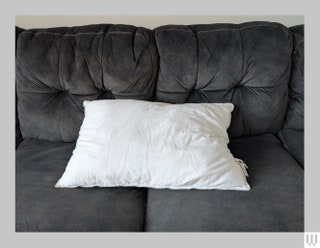Our Favorite Down Pillows for a Luxurious Night's Sleep
If you buy something using links in our stories, we may earn a commission. Learn more.
Down pillows have a reputation for being some of the most luxurious pillows around, and for good reason. If you've ever held a duck, you know how soft and cloudlike the feathers on its underbelly are. They're supportive, soft, and can make you feel like you're sleeping on air. It takes a lot to make a pillow out of them, though, so it can get expensive. Fortunately, we've found the best down pillows that don't break the bank, or your neck.
If you want to get even better sleep, check out our other guides, including the Best Mattresses, Best Mattresses for Side Sleepers, Best Organic Mattresses, Best Pillows, Best Sheets, and Best Bed Frames.
Power up with unlimited access to WIRED. Get best-in-class reporting that's too important to ignore for just $2.50 $1 per month for 1 year. Includes unlimited digital access and exclusive subscriber-only content. Subscribe Today.
What Is Down, and Where Does It Come From?
"Down" refers to the smaller, fluffier feathers found on the bellies of animals like ducks and geese. These feathers help waterfowl float on the surface of lakes, and helps both protect and insulate them. As such, they're excellent for things like insulated jackets, comforters, and, most relevant for us here, pillows.
Since these feathers come from animals, there are extra ethical concerns over how they're collected. Historically, some manufacturers or their suppliers have employed cruel practices like live plucking that harm the quality of life of the animals they source your pillow's filling from.
You can look for certifications from organizations like the Responsible Down Standard (RDS) and Downmark to find ethically sourced down. Both organizations set specific criteria suppliers and manufacturers must follow to ensure that animal products come from farms that don't abuse their animals.
What Are Fill Power and Fill Weight?
Not all down is created equal, and higher quality down can lead to more comfort and better sleep. It would be nice if the nebulous concept of "quality" could be reduced down to a single number. It can't, but there are a couple of metrics you can use to better gauge your pillow's quality.
The first is fill power. This measures how much air is trapped in a single ounce of down feathers. If one ounce of (uncompressed) down takes up 500 cubic inches, then it has a fill power of 500. This factor contributes to how fluffy the down is, as well as how much heat it traps. This can be a tricky number to rely on, because some products like down-filled jackets are designed to keep heat in, so more fill power is better.
With pillows, on the other hand, while more fill power means more fluffiness, it can also mean more heat gets trapped, leading to a never-ending search for the cool side of the pillow. In some cases, you'll find that pillow manufacturers have stopped including the fill number in their descriptions, specifically to avoid this confusion.
That's where fill weight comes in. This can often be confused with fill power, but instead it refers to how much down is in the pillow, measured in ounces. So, for example, a pillow with a lower fill weight might have 12 ounces of down, while a higher fill weight pillow might have 20 ounces. Both fill power and fill weight can contribute to how fluffy or firm a pillow is.
Most pillow manufacturers will eschew displaying either of these numbers too prominently, and instead offer selections for two or three levels of support. While we take these factors into consideration while testing, your best bet when buying any pillow is to consider how you sleep—on your side, your back, etc.—and pick the fill level that's most likely to keep your head and body supported in a way that suits you best.



